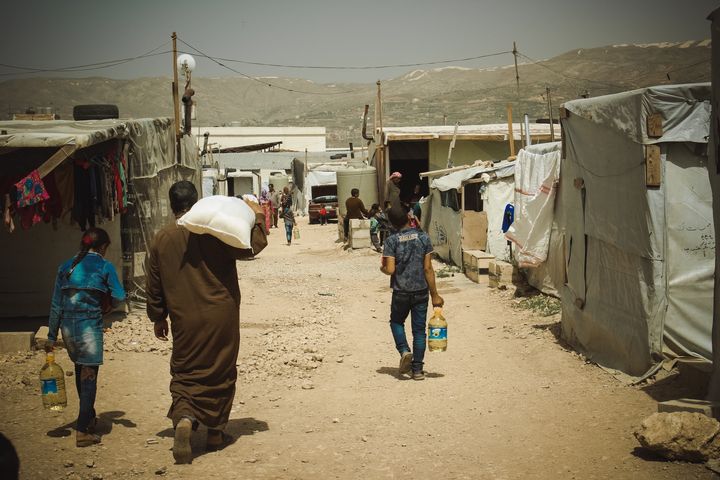
Today there are more refugees than at any time since World War II, and 65 million people are currently displaced from their homelands. Governments in West Africa are still bandaging together their health systems in the wake of Ebola. Supporting Latin American countries’ economic and political stability would do more to combat illegal immigration than retreating inwards and building a wall along the United States’ southern border. At the very time when de rigeur rhetoric is to attack foreign aid, global realities deserve smarter development investment.
For those eyeing President Trump’s budget proposal, foreign aid spending is facing a crippling 32 percent cut. At a time when agencies are already struggling to manage a massive migration crisis, the humanitarian food aid account – the frontline of defense for famine response – would be eliminated, and refugee assistance would be cut by 20 percent. Those watching the details of the budget cuts unfold know well, however, that traditional development funding has long been vulnerable to political football.
What is different this time is that a diversity of revenue streams have emerged to close, at least in part, the funding gaps created by traditional public and independent-sector donors. The aid community has been shifting away from a system reliant on institutional funders and large implementing organizations towards new models of challenge grants, impact investment, and social enterprise. Nowadays venture capitalists and tech incubators eye innovations pitched as game-changers in everything from mobile technologies to alternative energies.
It is exciting to see increasingly diverse portfolios of development funding, in addition to more democratized means of crowdsourcing innovation, but the lure of quick impact runs the risk of disrupting best practice. The scoreboard already speaks to the efficacy of steady development investments yielding significant gains in primary school enrollment, reductions in child and maternal deaths, and a decline in new HIV infections.
Of course, the global community can cultivate an appetite for novel ideas and investment without being seduced by the shiny and unproven, but there exists cause for concern. Good development practices based on empirical evidence may not stand tall enough to attract the attention directed towards compelling founder narratives or gadget-driven solutions. The overall goals of a large institutional donor and a venture philanthropist may be the same – promoting social justice and improving the lives of the poor and vulnerable – but the incentives and time horizons for their investments differ.
Social entrepreneurs are widely hailed as risk-takers shaking the status quo with fresh approaches to entrenched development problems. From climate change to education and beyond, there are now ample examples of social entrepreneurs successfully navigating the transition from idea to a sustainable model, but few investors truly pause to consider the ones that don't successfully scale and why.
One need only to have followed the astronomical rise of PlayPumps, touted as a colorful and cost-effective means of supplying communities with clean drinking water powered by the fun had by their local children. In 2006, PlayPumps International announced an ambitious goal to bring clean drinking water to ten million people by 2010. Lauded by major institutional donors, philanthropic foundations, and celebrities alike, few anticipated that the pumps would be found abandoned and in disrepair two years later. Evaluations of the PlayPump model – conducted after the influx of funding – exposed inefficiencies and implementation mistakes that eventually led to the organization’s collapse. One does not need to look far to see similar patterns continuing to emerge today.
Fortunately, the aid sector has experience with the maturation of exciting new ideas and models. Consider Ashoka, which for almost four decades has invested in social entrepreneurs creating change through innovative and cost-effective solutions and has, by now, demonstrated a maturation of a robust citizen-sector. Similarly, the development community cannot ignore when an established institutional investor, such as Chicago’s MacArthur Foundation, launches a $100 million public competition to solve a global problem in a way that’s “meaningful, verifiable, durable, and feasible”.
We applaud the institutions and organizations with appetites for taking informed risks on new ideas, people, financing mechanisms, and delivery models. In that risk calculation, however, beware of those glorifying bold vision over evidence of impact. Novelty and charisma can mask deep issues organizations’ operating models, thereby doing disservice to proven NGOs with limited donor dollars and those they seek to serve.
In this age of big data, information cannot be conflated for knowledge. What one measures – outcomes over mere hit rates – matters. With an influx of “quants” into performance measurement to ensure donors are getting the biggest bang for their bucks, this does not equate to more measurement but better measurement, both qualitative and quantitative. The most sophisticated decision-makers not only understand this but are also deepening their support for grantees’ evaluation capacity and advocating for rigorous impact measurement. Nevertheless, well-intended but misguided aid can do more harm than good. Board members and donors alike have a responsibility to demand evidence to drive development efforts to quality.
Like any industry, the aid sector is imperfect. NGOs stitch together grants to keep programs running, field workers are faced with needs far surpassing their means, and resource-limited governments navigate the whims of politics and donors. At the end of their very long days, the most experienced practitioners can feel as if they are tinkering at the margins of thorny, global challenges that require long-term, sustainable solutions. This is precisely why it is essential to demand data, monitor and evaluate carefully to find the blind spots, and ask the tough questions even if – and perhaps especially when – the answers generate difficult decisions.
Together Walsh and Babcock-Lumish have worked across geographies and issues to inform and deliver smarter global development.